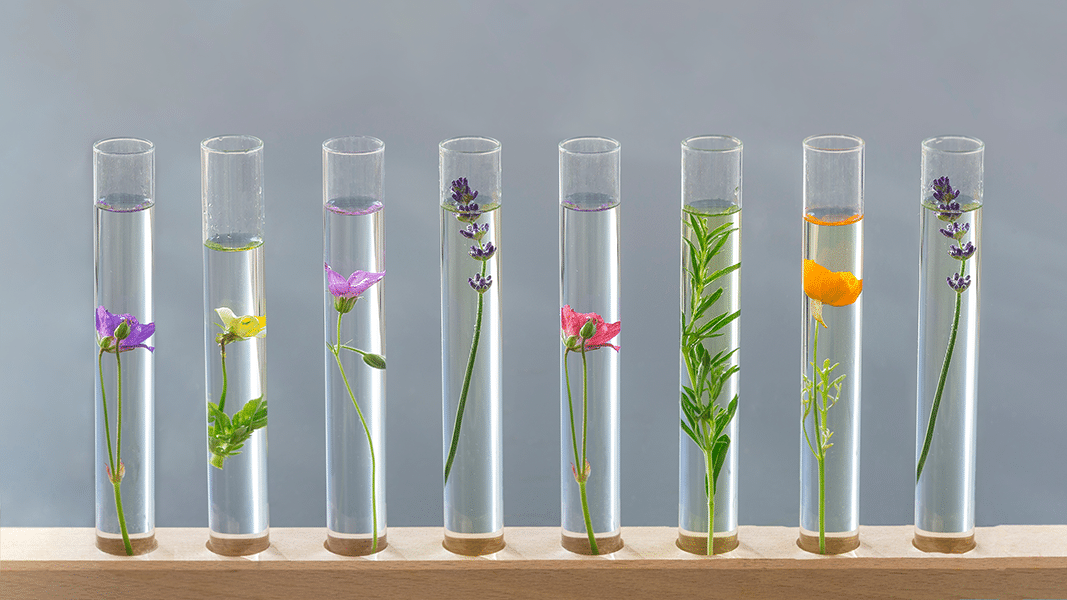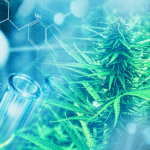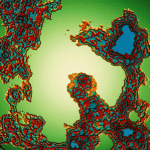Terpenes produce more than just scents. These secret weapons and key communicators of the plant world – about 20,000 distinct chemicals have been identified so far – can also induce a wide range of biological effects. There’s evidence that some plant terpenes can improve cognition, block pain, kill harmful bacteria, cause hallucinations, inhibit inflammation, fight cancer, make you sick, reduce stress, and get you high.
In the cannabis world, terpenes are a subject of steadily increasing interest. Project CBD recently reported on a new study that used analytical chemistry to determine key differences between cannabis samples labeled Sativa and Indica. The researchers uncovered no evidence for the common assumption that these two terms represent distinct genetic lineages, and there was also no meaningful difference between them in terms of cannabinoid profile. Ultimately, it all boiled down to a handful of terpenes including farnesene, myrcene, and eudesmol – compounds that, together with even-less-studied flavonoids, simultaneously influence cannabis flavor and effect.
As scientists continue to study terpenes and their place in not just the cannabis world but all of herbal medicine, new and sometimes surprising findings about these fascinating plant compounds emerge almost weekly.
Bad for Cancer Cells, Good for Brain Health?
Beta-caryophyllene is a sesquiterpene (consisting of three isoprene units1) famous for contributing to the spiciness of black pepper. It’s also found in cannabis, cloves, hops, rosemary, oregano, cinnamon, basil, and more. As a result of its presence in so many common foods and spices, it has been the subject of significant scientific attention over the last couple decades – especially following the discovery in 2008 that beta-caryophyllene binds to the CB2 cannabinoid receptor, making it the first known “dietary cannabinoid.”
In the last month, two more papers have added to the evidence base for the potential healing powers of beta-caryophyllene. First, a team of Italian researchers reported in the journal Molecules2 that hemp flower extracts containing three different forms of the terpene as well as the nonintoxicating cannabinoids CBD and CBC were toxic to triple negative breast cancer cells. Most of this cytotoxicity was attributable to CBD, the authors write, with CBC and caryophyllene increasing its strength: a classic case of the entourage effect.
A week later, a paper in the Journal of Food Biochemistry3 called attention to an entirely different outcome: enhanced cognitive function. A team of researchers affiliated with an Indian company called Vidya Herbs fed an extract of black pepper seed, standardized to contain 30% beta-caryophyllene, to mice pre-treated with a drug that induces an animal model of dementia. They report that the extract restored recognition and spatial memory in these mice in a dose-dependent manner, as measured in a pair of behavioral tests, and also improved biological markers of cognitive function and exerted anti-inflammatory effects in the brain. While intriguing, these findings should be taken with a degree of caution given the authors’ affiliation with a private company that produces the extract in question (Viphyllin) and their overt conclusion that “our data encourage Viphyllin as a functional ingredient/dietary supplement for brain health and cognition.”
Reducing Pain through the Endocannabinoid System
Two other recent papers highlight the ability of certain terpenes to mitigate different forms of pain. In one study published in October 2021 in the Brazilian Journal of Medical and Biological Research4, a team of Brazilian researchers, collaborating with esteemed cannabinoid scientist Vincenzo di Marzo of Italy’s National Research Council, tested the pain-blocking effect of kahweol, a coffee diterpene.
Through the administration of CB1 and CB2 receptor antagonists, the researchers discovered that kahweol reduces pain sensations through the endocannabinoid system – more specifically, via release of the endogenous cannabinoid anandamide and its activation of CB1 receptors. “This compound could be used to develop new drugs for pain relief,” they conclude – though many of us are already smelling and drinking it daily.
A second study looked at the ability of the cannabis-derived terpenes alpha-bisabolol (which imparts a floral fragrance and is also found in chamomile) and camphene (whose smell is most often described simply as “pungent”) to inhibit inflammatory and neuropathic pain. As reported in Molecular Brain5, the authors found that both molecules demonstrated “a wide spectrum of analgesic action” by modulating T-type calcium channels in the brain, previously recognized as targets of some phyto- and endocannabinoids.
Fighting Back Against Antibiotic-Resistant Bacteria
Methicillin-resistant Staphylococcus aureus (MRSA) is a serious concern in hospitals, healthcare facilities, and other settings where people are in close physical contact or share equipment or supplies. Infection with this bacteria, which spreads through the skin, is often harmless – but in some cases can also lead to sepsis or death because it is so difficult to treat due to its resistance to common antibiotics.
Many terpenes are already known to possess powerful antibacterial properties; that’s part of what plants make them for, after all. Now a team of researchers based in the Czech Republic and Italy have reported in the journal Natural Product Research6 that two heretofore uncharacterized diterpenes from the plant Coleus blumei demonstrate antibacterial activity against MRSA.
Interestingly, this common nursery plant, bred to produce a wide variety of cultivars for ornamental use in home gardens, has also historically been consumed by indigenous people of Mexico for its psychoactive effects. In their book Plants of the Gods, ethnobotanist Richard Evan Schultes, chemist Albert Hofmann, and anthropologist Christian Rätsch note that Coleus bears some similarities to Salvia divinorum, a potent, dissociative hallucinogen also found in Mexico. That plant’s active ingredient is a unique diterpene called Salivorin A, which produces its effects through kappa opioid receptors.
Could Coleus terpenes be psychoactive in addition to antimicrobial? As Schultes et al. wrote 20 years ago in the revised version of their groundbreaking book (first published in 1979), and evidently still true today, “The chemistry and pharmacology must be researched further.”
Nate Seltenrich, Project CBD contributing writer, is the author of the column Bridging the Gap. An independent science journalist based in the San Francisco Bay Area, he covers a wide range of subjects, including environmental health, neuroscience, and pharmacology. © Copyright, Project CBD. May not be reprinted without permission.
Footnotes
- Terpenes are composed of varying numbers of isoprene molecules (or units), each containing five carbon atoms. The simplest terpenes are monoterpenes, with two isoprene units and 10 carbon atoms. Sesquiterpenes are the next largest, followed by diterpenes (four isoprene units), triterpenes (six isoprene units), and finally tetraterpenes (eight isoprene units).
- https://www.mdpi.com/1420-3049/26/2⅙688/htm
- https://onlinelibrary.wiley.com/doi/full/10.1111/jfbc.13994
- https://www.ncbi.nlm.nih.gov/pmc/articles/PMC8555452/
- https://molecularbrain.biomedcentral.com/articles/10.1186/s13041-021-008…
- https://www.tandfonline.com/doi/abs/10.1080/14786419.2019.1686371?journa…
Recommended Readings
I’m Just Mad About Saffron
The benefits of common kitchen spices are mediated by cannabinoid receptors in the brain.
CBD & Its Entourage
Excerpted from “The Essential Guide to CBD” by the Editors of Reader’s Digest and Project CBD.
Nomenclature Alert: Beyond Indica & Sativa
Cannabis terpene profiles are more meaningful than strain names and breeding history.










